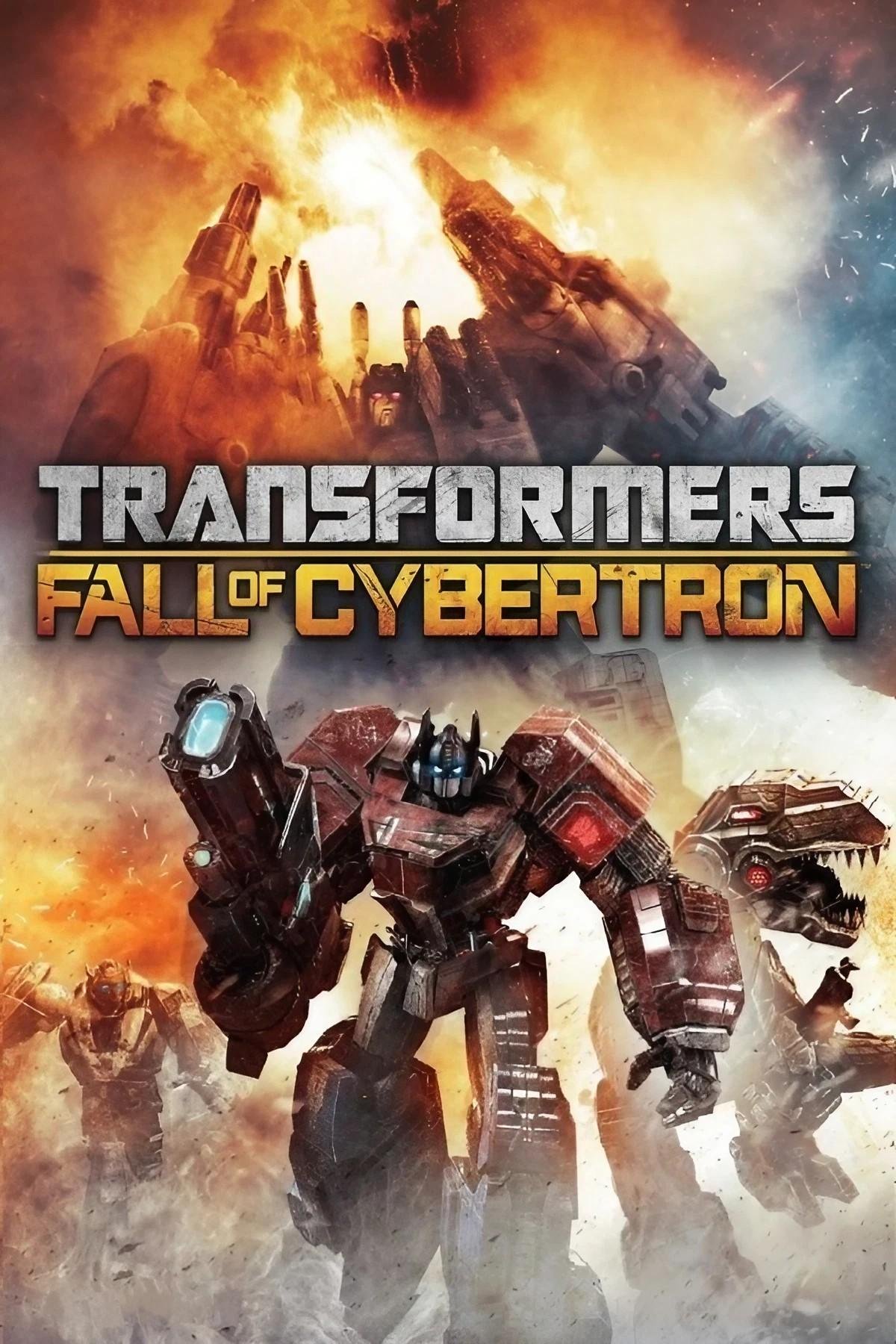Transformers: Fall of Cybertron
Developer: High Moon Studios
Genre: Multiplayer Co-op and PvP; Third-person; Shooter
Engine: Unreal 3.5
Platforms: Playstation 3; Xbox 360; Microsoft Windows; Playstation 4; Xbox One
Released: August 2012
Gameplay Overview: A fast-paced narrative-driven shooter where players can transform between humanoid and vehicle anytime anywhere to achieve their objectives. Sequel to Transformers: War for Cybertron
My Role: Senior Game Designer (generalist)
Duties: AI Design, Level Design, AI/Level Design Liaison
Responsibilities:
Design of the AI enemy combatants
Design, blockout, and scripting of the final level of the game, Chapter 13: Till All Are One
Coordination with Level Design teams on AI enemy combatant implementation
Transformers: Fall of Cybertron was the sequel to Transformers: War for Cybertron. On this project, I shifted my focus to AI/Combatant Design. Our AI systems and enemy designs were key areas of improvement for us over the original game, so I paired with the AI engineering team to lead the charge from the design side.
I also reprised my role as a pinch hitter on level design by coming in at the end to design, build, and script the final mission of the game, “Till All Are One”.
Highlights for me were:
Seeing our game make the cover of Game Informer and, in particular, our AI improvements getting called out in this article.
Receiving major kudos for the final mission, including this quote from G4 TV: “The thirteen level campaign feels like it’s building to a massive confrontation the whole time, and that’s exactly what happens in the stunning final level.”
Tackling the design challenge of how to incorporate transformation in our enemy designs and behaviors.
AI Combatants
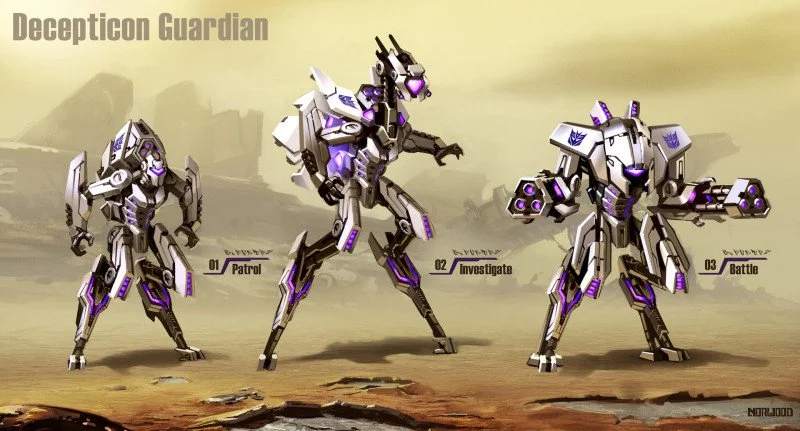
The Decepticon Guardian used transformation to indicate state changes between patrol, investigate, and battle modes. Used in our stealth gameplay sections.

Guardian in Investigate mode. The green scanning laser was a clear delineation for players. If the laser touched you, you were spotted!

Guardian in Battle Mode. Once this combatant spots a hostile target, he transforms and becomes a deadly threat.

The Decepticon Leaper is a melee range combatant that is nearly indestructible from the front, but vulnerable in the back.
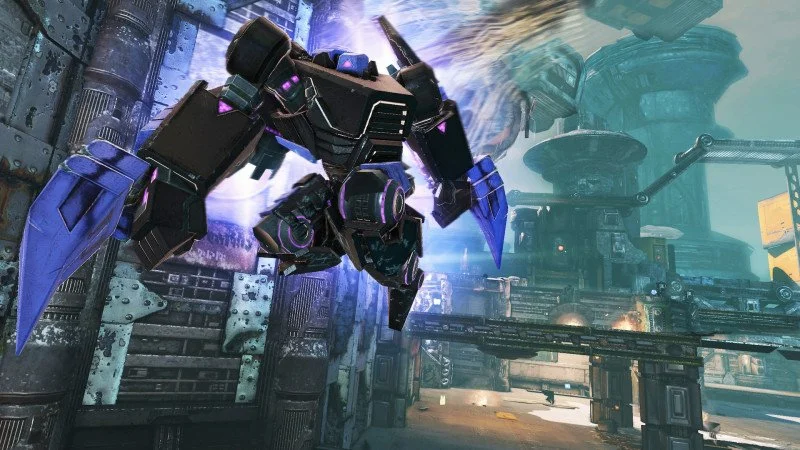
The Leaper launches himself in the air, transforms into a wedge shape and dive-bombs at the player's location, creating an AoE where he lands
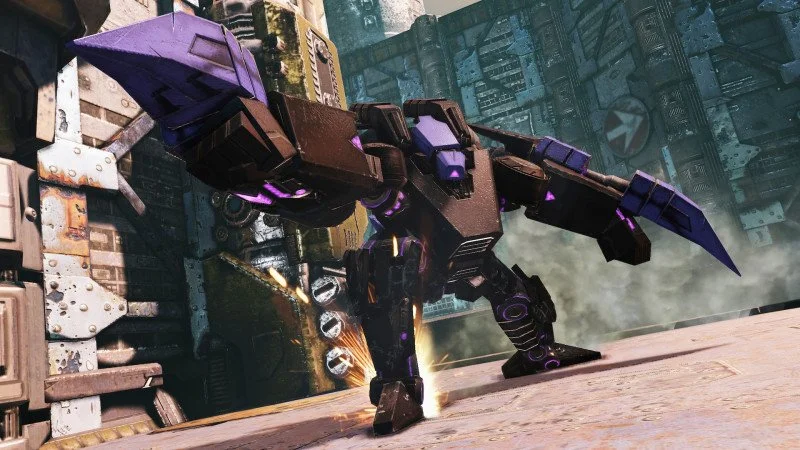
The Leaper also used his thruster backpack to perform a forward melee dash attack. Both the leap slam and the dash had clear, obvious anticipation tells and ample recovery time at the end, alowing players opportunities to circle around behind them and attack their weakspot.

The Wall-Crawler was a sniper unit that flew between shooting perches on walls to attack players from unexpected positions.
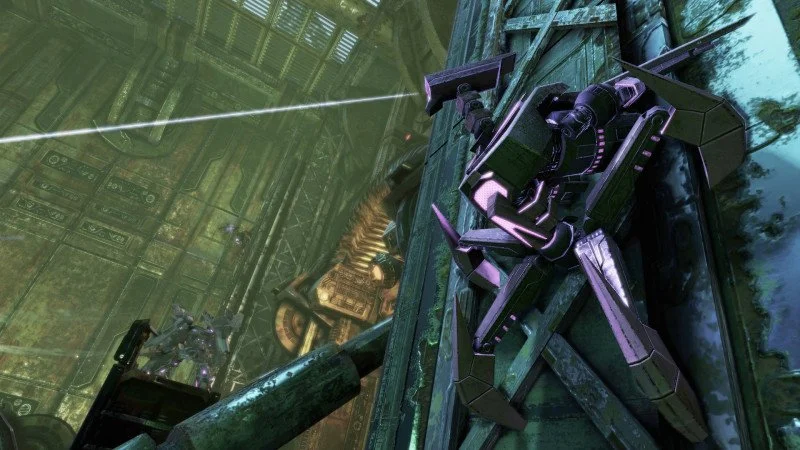
The Wall-Crawler's laser sight was a clear tell that provided players with information about the Wall-Crawler's location and when it was about to attack.
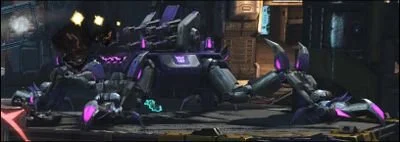
The Marauder was a large, stationary artillery unit used in some of our big battle scenes.
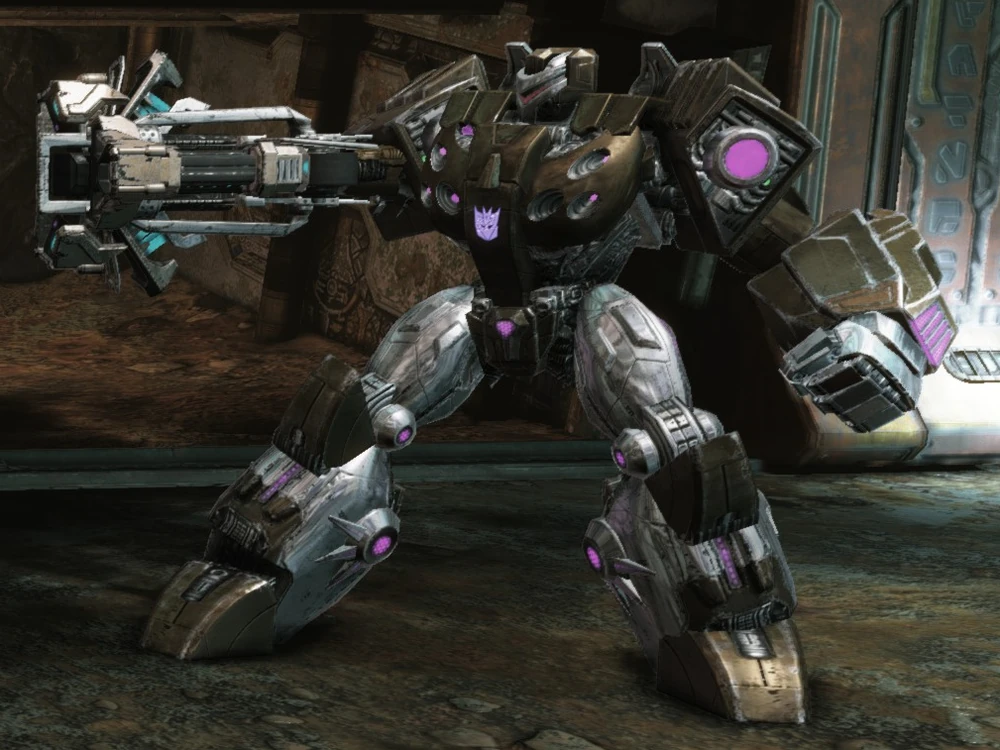
The Shotgunner was an agile, harasser unit that could be deadly if left unchecked. Though not particularly tough, he used jukes and dodges between shotgun blasts to increase his survivability.

The Decepticon Hover-Tank was a mobile artillery unit used as long-range suppression and area denial.
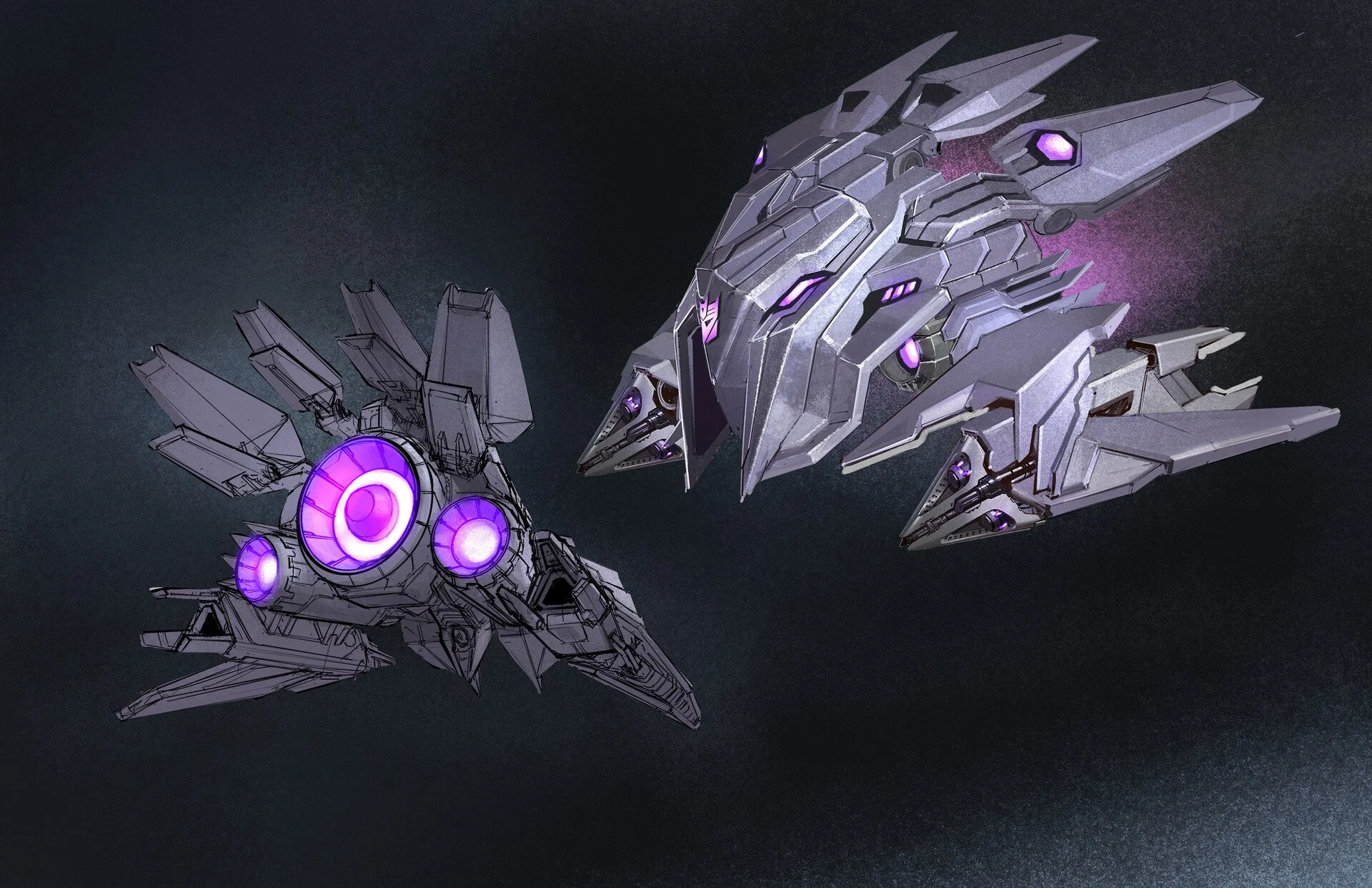
Simple flier units like this were essential for challenging aerial players and also for utilizing the ample negative space of our levels.
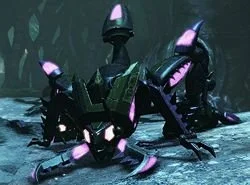
The Insecticon enemies were primarily designed around the melee-focused gameplay of Grimlock. The Swarmer was a fodder unit that would attack in large numbers, emerging from holes in the wall and crawling up over ledges to attack en masse.
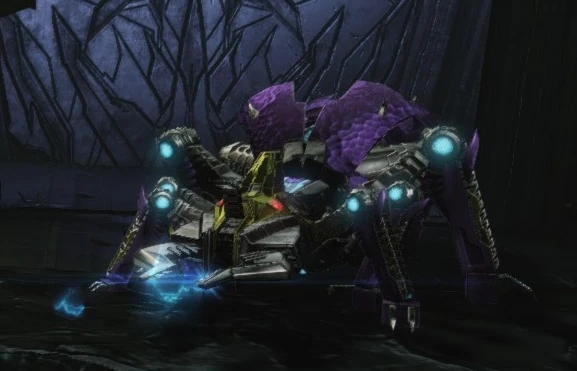
The Insecticon Bruiser was a heavy melee unit that would charge forward at players until it hit either a target or a wall. Hitting a wall would stun the Bruiser and expose its vulnerable abdomen.
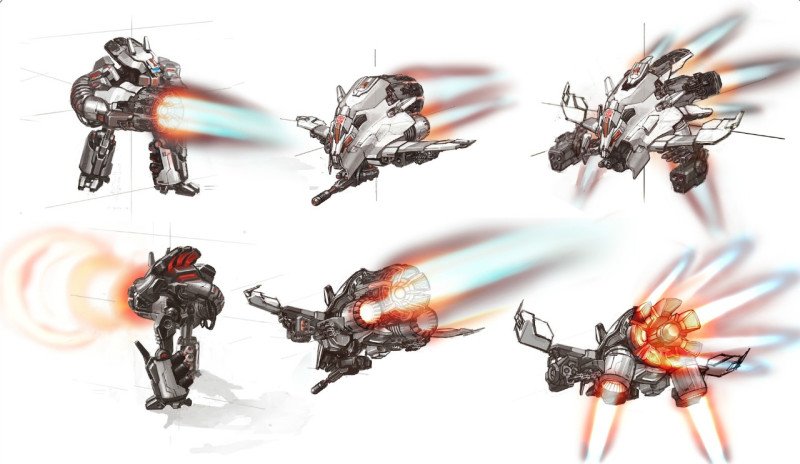
Both Autobots and Decepticons had fliers. In many cases, we leveraged reuse and reskinning to extend the gameplay of our enemies across both factions.
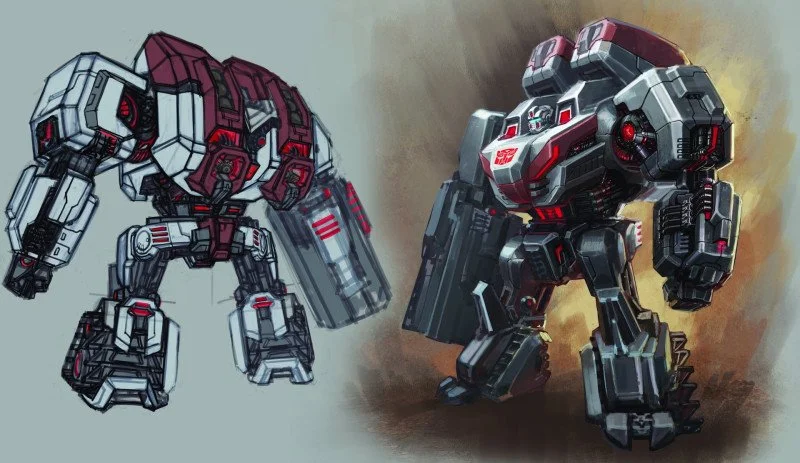
The Autobot Titan was one of the combatants unique to that faction. It was primarily a suppressor unit, using its massive gatling gun to push players around the space and behind cover.
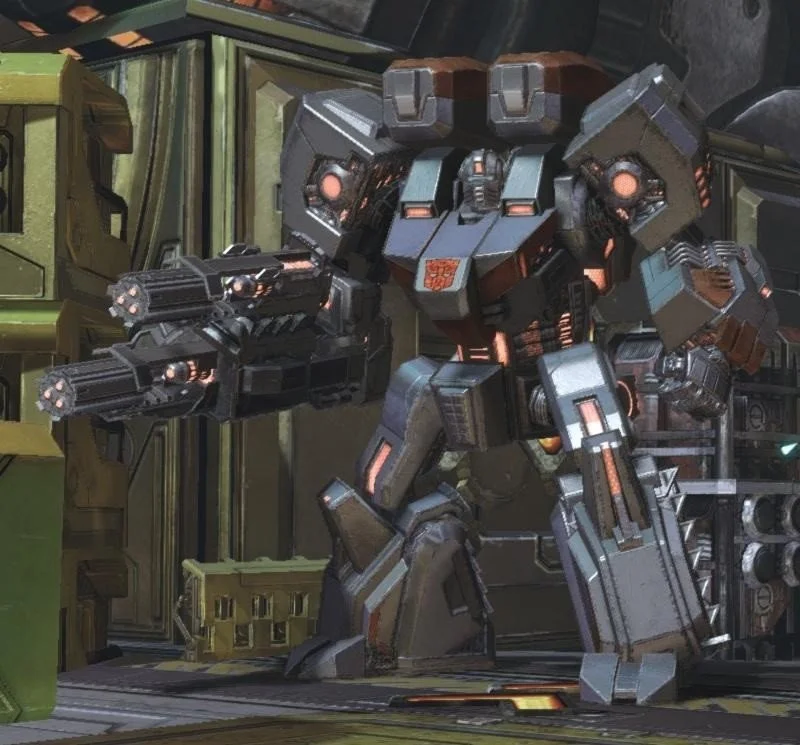
The Titan would also deploy shield drones to protect itself. These flying drones would hover around the Titan, attached by obvious visual beams, and had to be destroyed to bring down the shield.
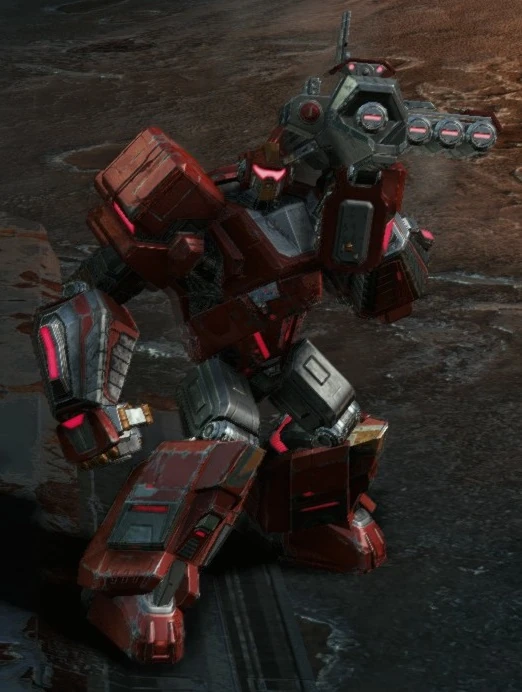
The Autobot Rocketeer was inspired by the Rokkit Boyz from Space Marine. They would hang back and fire drunken missiles at players.
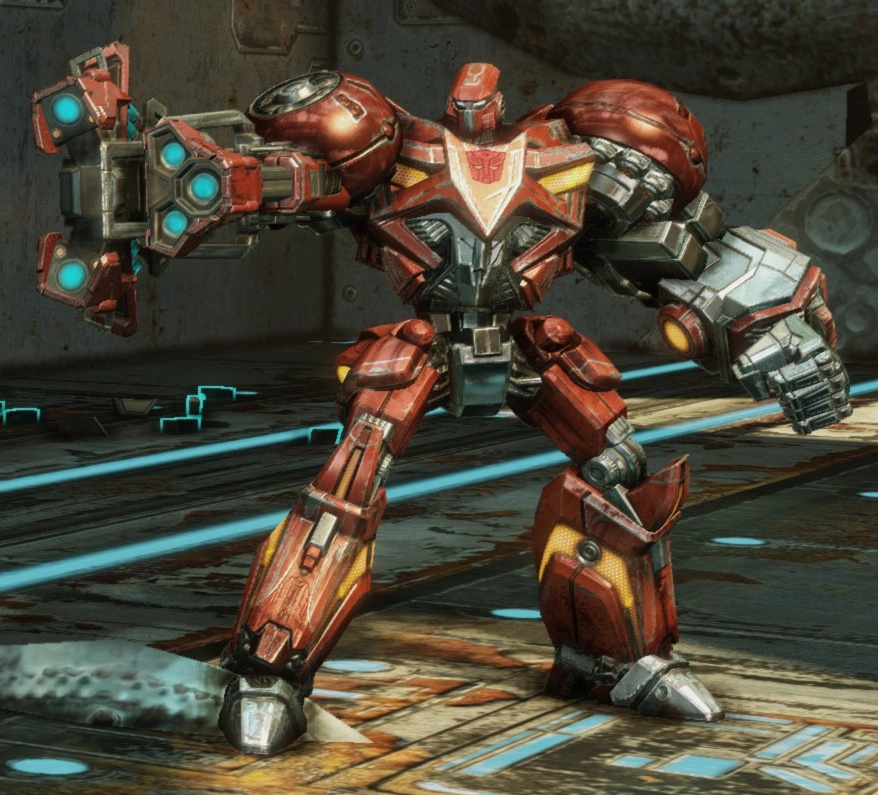
The Autobot Shotgunner. Another example of reuse and reskinning.

Another reskin example - the Autobot Marauder
Chapter 13: Till All Are One
Till All Are One was a unique level that had players rapidly switching sides between the Autobots and Decepticons for a series of small, playable gameplay sequences stitched together by clever cinematics, dialogue and UI elements that harkened back to the 80’s cartoon.
In one example, players take control of Bruticus to smash and stomp their way across the surface of a moving spaceship, destroying everything in their wake… and then switch to Jazz to face down an AI version of Bruticus in a pitched boss battle.
I was paired with a gameplay engineer and we developed several player mechanics as well, like the cassette tape launching abilities of Soundwave. We had the advantage of building the level late in development, so we had a plethora of mechanics to leverage, and we made good use of them.
Finally, we built two bespoke melee player and boss combatants for the finale and allowed players to choose whether to play as Optimus or Megatron. Each AI opponent had a similar set of base behaviors, but they had their own unique special abilities and attack patterns, adding nuance and difference to whatever choice the players made.
